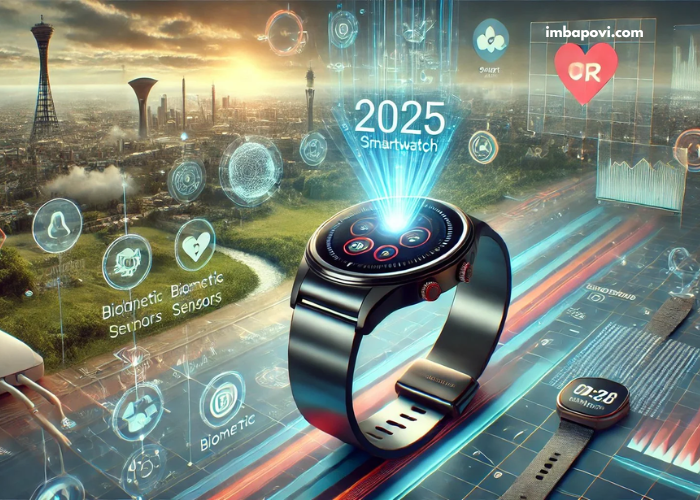The healthcare industry is undergoing a dramatic transformation, thanks to the rapid advancements in cutting-edge technologies. These innovations are not only improving patient care but also enhancing the efficiency, accuracy, and accessibility of medical services. As healthcare systems strive to meet the demands of a growing and aging population, the integration of new technologies is becoming essential. In this article, we will explore some of the most groundbreaking technologies currently reshaping the healthcare landscape.
The Role of Technology in Healthcare Transformation
Technology has always been a catalyst for change, and in healthcare, its influence is increasingly being felt. The integration of digital tools, automation, artificial intelligence (AI), and other advanced systems is improving the overall quality of care. These technologies are helping to reduce human error, streamline operations, provide more personalized treatment, and enable faster diagnoses. But as the industry embraces these innovations, there are still challenges to overcome, such as cybersecurity risks, data privacy concerns, and the need for regulatory frameworks to keep pace with the rapid changes.
Telemedicine: The Future of Remote Healthcare
One of the most prominent advancements in healthcare technology is telemedicine, which allows healthcare providers to remotely consult with patients via video calls, phone calls, or other digital platforms. The COVID-19 pandemic accelerated the adoption of telemedicine, highlighting its effectiveness in delivering care when traditional in-person visits were not possible.
Benefits of Telemedicine:
- Accessibility: Telemedicine breaks down geographical barriers, allowing patients in rural or underserved areas to access quality care without traveling long distances.
- Convenience: Patients can schedule consultations from the comfort of their homes, reducing the time and stress associated with traditional appointments.
- Cost-Effectiveness: Telemedicine often reduces costs for both healthcare providers and patients by eliminating the need for physical infrastructure and travel expenses.
Telemedicine is expected to continue growing in the future, as improvements in internet access, digital tools, and regulatory policies create a more favorable environment for its expansion.
Artificial Intelligence (AI) and Machine Learning in Healthcare
Artificial intelligence and machine learning are playing an increasingly significant role in healthcare, with the potential to revolutionize diagnosis, treatment planning, and patient care. By analyzing vast amounts of medical data, AI algorithms can identify patterns and make predictions that humans might miss, improving the overall accuracy of healthcare services.
AI in Diagnostics: Enhancing Accuracy
AI has the ability to process and analyze medical imaging, such as X-rays, MRIs, and CT scans, much faster and more accurately than human radiologists. Machine learning models can be trained to detect abnormalities, such as tumors, fractures, or signs of disease, with high precision. In some cases, AI-powered tools have been shown to outperform human doctors in detecting certain conditions, offering the potential for earlier and more accurate diagnoses.
AI in Personalized Medicine
AI can also be used to tailor medical treatments to individual patients by analyzing their genetic data, medical history, and lifestyle factors. This approach, known as personalized or precision medicine, helps healthcare providers select the most effective treatments based on the unique characteristics of each patient.
Benefits of AI in Healthcare:
- Increased Diagnostic Accuracy: AI can help identify medical conditions faster and more accurately, potentially saving lives.
- Predictive Analytics: AI models can predict patient outcomes, such as the likelihood of readmission, enabling proactive care management.
- Cost Savings: By automating time-consuming tasks, AI allows healthcare professionals to focus on more critical patient care needs, ultimately reducing healthcare costs.
Robotics: Revolutionizing Surgery and Patient Care
Robotics is another technology that is making significant strides in the healthcare industry. Surgical robots are increasingly being used to perform complex surgeries with greater precision and minimal invasiveness. Robotic systems, such as the da Vinci Surgical System, allow surgeons to perform delicate procedures through small incisions, resulting in less pain, faster recovery times, and reduced risk of infection for patients.
Benefits of Robotic Surgery:
- Minimally Invasive Procedures: Surgeons can operate with greater accuracy, reducing trauma to the body and speeding up recovery.
- Enhanced Precision: Robots can assist in performing highly intricate tasks that require exceptional precision.
- Shorter Recovery Times: Because robotic surgeries are less invasive, patients can typically return to their normal activities faster than with traditional surgery.
Robotic Nursing Assistants: Improving Care Delivery
In addition to surgical robots, robotic nursing assistants are becoming more common in hospitals and long-term care facilities. These robots help with tasks such as delivering medications, assisting patients with mobility, and providing companionship. This allows human nurses to focus on more critical aspects of patient care while robots handle routine or repetitive tasks.
Wearable Technology: Empowering Patients
Wearable devices, such as fitness trackers, smartwatches, and health-monitoring gadgets, have become an integral part of healthcare. These devices allow patients to track their vital signs, physical activity, and even mental health in real time. Wearables can help individuals manage chronic conditions like diabetes, hypertension, and heart disease by providing continuous data that can be shared with healthcare providers.
The Role of Wearables in Chronic Disease Management
For patients with chronic diseases, wearables offer a valuable way to monitor health metrics consistently and receive early warnings if any changes are detected. For instance, continuous glucose monitors (CGMs) provide real-time data on blood sugar levels for diabetics, helping them manage their condition more effectively.
Benefits of Wearable Technology:
- Continuous Monitoring: Wearables provide constant monitoring of vital health parameters, offering early detection of potential health issues.
- Patient Empowerment: Wearables encourage patients to take an active role in their health by tracking their data and making informed decisions about their wellness.
- Data Integration: Data from wearable devices can be integrated into electronic health records (EHRs), allowing healthcare providers to offer more personalized care.
Blockchain in Healthcare: Enhancing Data Security and Transparency
Blockchain technology, known for its role in cryptocurrencies like Bitcoin, is gaining attention in healthcare for its potential to improve data security, privacy, and transparency. Blockchain is a decentralized, immutable ledger that records transactions in a secure and transparent way.
Blockchain for Secure Health Records
One of the key applications of blockchain in healthcare is in the management of electronic health records (EHRs). Blockchain can provide a secure and tamper-proof way to store patient records, ensuring that only authorized individuals have access to sensitive health data. This helps protect against data breaches and unauthorized access while allowing patients to have more control over their information.
Benefits of Blockchain in Healthcare:
- Data Integrity: Blockchain ensures that patient data is accurate and cannot be altered or tampered with.
- Enhanced Privacy: Blockchain allows for secure, permissioned access to patient records, ensuring that personal health information is kept private.
- Interoperability: Blockchain can facilitate data sharing between different healthcare providers and systems, improving care coordination.
The Internet of Medical Things (IoMT)
The Internet of Medical Things (IoMT) refers to the network of connected medical devices that communicate with each other and with healthcare systems. These devices include everything from wearable fitness trackers to hospital equipment like ventilators and infusion pumps.
How IoMT is Changing Healthcare
IoMT devices are transforming patient care by enabling remote monitoring, real-time data collection, and faster decision-making. For example, connected devices can send vital signs such as heart rate, blood pressure, and oxygen levels directly to healthcare providers, allowing them to monitor patients without being physically present.
Benefits of IoMT:
- Real-Time Monitoring: IoMT devices provide continuous health monitoring, which is especially important for patients with chronic conditions or those in critical care.
- Improved Patient Outcomes: By providing healthcare professionals with immediate access to data, IoMT devices help improve decision-making and patient outcomes.
- Efficient Resource Management: IoMT devices can help optimize hospital operations by ensuring that equipment is functioning properly and is available when needed.
Virtual Reality (VR) and Augmented Reality (AR) in Healthcare
Virtual Reality (VR) and Augmented Reality (AR) are two technologies that are beginning to find their place in healthcare. VR immerses users in a fully simulated environment, while AR overlays digital information onto the real world.
VR and AR in Medical Training
VR and AR are revolutionizing medical education and training by providing realistic simulations of surgeries, medical procedures, and patient interactions. Medical students can practice in a virtual environment without the risk of harming real patients, while surgeons can use AR to visualize patient anatomy in 3D during procedures.
Benefits of VR and AR in Healthcare:
- Enhanced Training: VR and AR offer interactive and immersive learning experiences, helping medical professionals refine their skills in a safe and controlled environment.
- Improved Patient Engagement: VR can be used to help patients understand their conditions and treatment plans, reducing anxiety and improving compliance.
- Surgical Assistance: AR can provide surgeons with real-time guidance during operations, improving precision and reducing errors.
Conclusion
As the healthcare industry continues to evolve, cutting-edge technologies are playing a pivotal role in shaping its future. From telemedicine and AI-driven diagnostics to wearable devices and blockchain-based health records, these innovations are improving patient care, increasing accessibility, and enhancing efficiency across healthcare systems worldwide. While challenges remain, the future of healthcare looks promising, with technology at the forefront of providing better, more personalized care for all.
By embracing and integrating these technologies, healthcare providers can deliver high-quality services, improve patient outcomes, and reduce costs. As the digital health revolution continues, the potential to transform the industry is limitless, offering hope for healthier futures for people everywhere.





